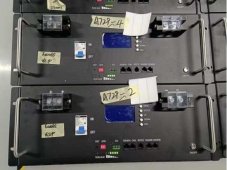I superinsulated my 8-foot x 8-foot x 8-foot off-grid solar power shed. it houses all the lifepo4 cells and solar charge controllers and is running 3 low-frequency inverters(6k, 8K, and 15K,) (plus a 6kLF inverter on standby)... so on the coldest winter days of 25 to 30 degrees below zero Fahrenheit >>> a 100 watt light bulb running off the inverter kept the shed to 55 degrees... no grid connection what so ever....
most of the time the light bulb is not even necessary but is the safety for the supercold overnight temperatures...in dead of winter....i am off-grid in South Dakota....
I will add a bit more insulation this fall to seal it more.... I think insulation will help the most....
the inverters put out a fair amount of waste heat....likely somewhere in the neighborhood of 600 to 800 watts each or more under heavy loads>>>I have no way to measure this waste heat, but it is a fact of operating the Low-frequency electrical inverters??
freezing temperatures were my main concern 1st,,,,
now the big concern is getting rid of the excess inverter waste heat in the summertime...
need to air-condition to 72 degrees for happy battery and component lifespan....
the heat is hard on the inverter performance and lifepo4 doesn't care for the extra heat either...




